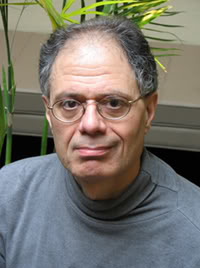Most of us have as yet scarcely glimpsed the changes that science is working in our understanding of self and society. I sometimes suspect, particularly after reading books like “Critical Mass” and “The Moment of Complexity,” that our everyday perceptions of human nature and social life will change more in the next 200 years than they have in the last twenty thousand.
Statistics, for example, is something new in intellectual history. I don’t mean batting averages and such – that’s just record-keeping. I mean the recognition that objects or processes that seem to be nothing alike individually may behave exactly alike en masse. According to “Critical Mass,” liquids changing to gases and vice versa, magnets becoming demagnetized, automobile traffic moving from free-flowing to congested, currencies going from stable to hyperinflated, neighborhoods in transition from low to high crime incidence or from racially mixed to racially segregated: all these and many other physical and social processes share an unexpected, counterintuitive characteristic. They don’t happen stepwise. Instead, at a critical point there is a “phase transition,” a very rapid change from one state to another. Gas molecules and (to a first approximation) commodity prices both move in a pattern called a “random walk.” Snowflakes, bacteria clusters, coastlines, and stock-market fluctuations all have “fractal” properties: each repeatedly displays the same structure at different scales. Coin tosses, measurement errors, the sex of babies, and all other random occurrences show a single probability distribution: the Gauss curve (better known as the “bell curve”). Granted, humans have intelligence (hah!) and free will, which makes us unique … but only when taken individually. Taken in large numbers, we’re no more unique than bacteria or gas molecules. It’s all a question of scale.
For the most part, Philip Ball does not pursue such philosophical questions. He’s a prolific and accomplished science journalist, whose previous books offer guided tours around an impressive variety of subjects: color, water, the chemical elements, materials science, pattern formation, and more. “Critical Mass” is not light reading, but it’s lively and wonderfully informative. Those able to get their minds around a few central concepts – probability distributions, power laws, self-organization, scale-free networks, collective motion – will be intrigued to discover how widely they apply to social phenomena.
Some of these applications are merely entertaining, like Bacon Numbers, which reveal who is at “the real center of the Hollywood universe.” But many are genuinely significant. And they cut all ways, ideologically. Radical democrats hoping to do away with politicians someday will be disappointed by Arrow’s Impossibility Theorem, which proves that in any multi-issue election, no voting method will produce unambiguous results. On the other hand, Pareto’s Law of income distribution suggests that economic inequality is related to stock-market instability, so if the ultra-rich want to avoid losing their shirt periodically, they should spread their money around a bit more.
The chapters of “Critical Mass” dealing with game theory also yield exciting and important results. From time immemorial, we starry-eyed idealists have been informed condescendingly by tough-minded realists that trust and cooperation are not a practical basis for political or economic life. Nice guys finish last, and all that. Well, it’s not so – see Chapter 17, which proves mathematically that niceness is a winning strategy. (At least some of the time, that is, and subject to certain qualifications – but why be picky?)
“The Moment of Complexity” surveys some of the same ground as “Critical Mass,” but from a much loftier vantage point. Mark Taylor is a philosopher, theologian, and all-purpose cultural theorist. His latest book (he is even more prolific than Philip Ball) is a reinterpretation of everything: a tour d’horizon of contemporary thought, emphasizing the implications of recent science for art, ethics, and psychology. Predictably, his execution is unequal to his ambition. He’s not a colorful or a particularly lucid writer, but he does say interesting things about Hegel, Heidegger, Foucault, Derrida, contemporary painting, coevolution, cellular automata, and information theory. This will be reward enough for some of us, who are grateful even for barely intelligible writing on those subjects.
The book’s leading idea is complexity, which, like statistics, has an everyday and a technical meaning. Many people from many disciplines have begun to converge on the question: Why does order sometimes emerge spontaneously? An ant nest is one example. Others include central nervous systems, ecologies, cultures, evolutionary genetics, the global economy, and possibly the Internet. These are “complex adaptive systems,” that is, systems with “a large number of components that can interact simultaneously in a sufficiently rich number of parallel ways so that the system shows spontaneous self-organization and produces global, emergent structures.” (Taylor includes a brilliant discussion of whether language, too, is a complex adaptive system.)
Complexity is perhaps the leading edge of scientific inquiry today. At any rate, it’s where the buzz is. Inevitably, a great deal of nonsense will be (already has been) written on the subject. “The Moment of Complexity” can help strengthen your intellectual immune system.
[END]
